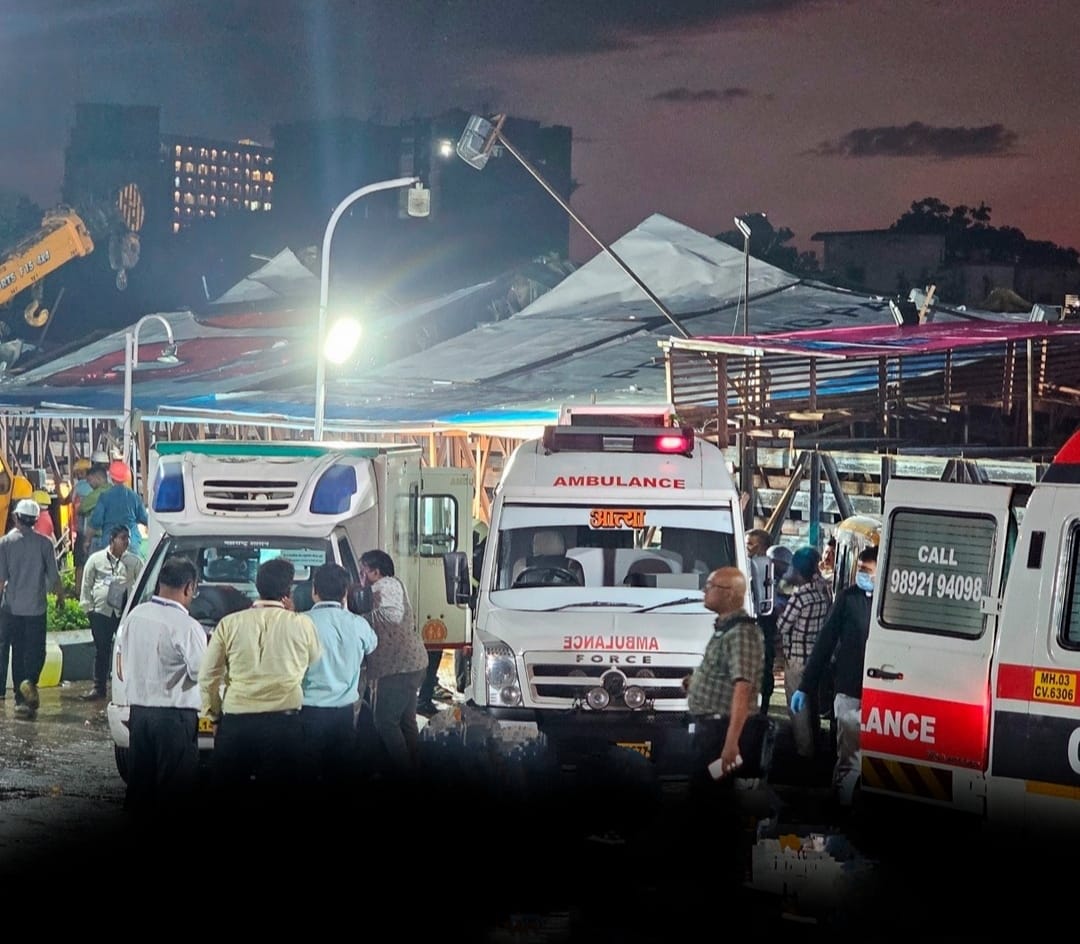The death toll in the Mumbai Ghatkopar billboard collapse incident has risen to 14.
In the wake of a harrowing incident in Mumbai’s Ghatkopar, where a metal billboard crashed amid a strong dust storm, the city is grappling with the aftermath and launching rescue operations to mitigate the damage. As the rescue efforts continue, it’s imperative to reflect on the factors that led to this tragedy and the urgent need for improved safety measures.
The incident unfolded on a fateful evening, as the bustling streets of Ghatkopar were engulfed by a sudden dust storm. Amidst the chaos, a towering metal billboard, once a prominent fixture against the skyline, came crashing down with terrifying force. Seven individuals bore the brunt of this catastrophe, sustaining injuries in the process. Tragically, the impact proved fatal for fourteen others, their lives snuffed out in a moment of unexpected horror.
Rescue operations swung into action promptly, as emergency responders and volunteers worked tirelessly to extricate those trapped under the rubble. The scenes that unfolded were nothing short of heart-wrenching, with families anxiously awaiting news of their loved ones and brave souls risking their own safety to save others.
Over the course of the rescue mission, a total of eighty-eight individuals were rescued from the debris. While the efforts of the rescue teams undoubtedly saved lives, the toll of the tragedy remains staggering. As the city mourns the lives lost and grapples with the injuries inflicted, questions loom large about the circumstances that led to such a catastrophic event.
Initial reports suggest that the collapse of the billboard was exacerbated by the fierce winds of the dust storm. However, it’s essential to delve deeper into the root causes of the incident. Was it a failure in the maintenance of the structure? Were there lapses in adherence to safety protocols during its installation? These are critical questions that demand thorough investigation.
Moreover, the incident underscores broader concerns about urban infrastructure and public safety in Mumbai. With its densely populated neighborhoods and bustling thoroughfares, the city is no stranger to infrastructure challenges. Dilapidated structures, unchecked construction, and inadequate maintenance pose constant threats to the safety and well-being of its residents.
In the aftermath of the Ghatkopar tragedy, there is a pressing need for authorities to reassess existing safety regulations and enforcement mechanisms. Stringent measures must be put in place to ensure that all structures, particularly those in public spaces, adhere to robust safety standards. Regular inspections, timely maintenance, and stringent quality control protocols are paramount to prevent such calamities in the future.
Furthermore, public awareness and preparedness are essential facets of disaster mitigation. Educating citizens about safety protocols during natural disasters, such as dust storms, can help minimize risks and save lives. From seeking shelter in sturdy structures to avoiding outdoor areas during adverse weather conditions, proactive measures can significantly reduce vulnerabilities.
As the city mourns the lives lost in the Ghatkopar tragedy, it must also channel its grief into action. Comprehensive reforms in urban planning, infrastructure development, and disaster preparedness are imperative to safeguard the lives and livelihoods of Mumbai’s residents. Every individual deserves the right to safety and security in their own city.

